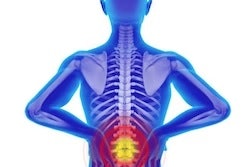
Whole-body CT (WBCT) reduces the time patients presenting with lower extremity fractures spend in the emergency department (ED) -- but at a price, a study published in the June issue of Emergency Radiology has found.
But it also increases overall imaging costs and radiation exposure, wrote a team led by Dr. Tyler Smith of Alaska Native Medical Center in Anchorage.
"[Our research found that] the development of a WBCT for trauma resulted in significantly decreased time in the ED and reduction of the number of lower extremity radiographs in patients with lower extremity injuries ... [but this] came at the expense of adding total imaging costs and radiation exposure," the investigators noted.
Trauma is the leading cause of death in people under the age of 45, and quick evaluation of patients presenting in the emergency department is crucial for improving patient outcomes, the group wrote. Trauma patients tend to be initially assessed via x-ray or ultrasound exams as well as clinical evaluation. Yet whole-body CT has been associated with lower mortality rates and shorter emergency department stays and may also find injuries that would not have been identified otherwise.
In the trauma setting, CT imaging typically consists of a noncontrast exam of the head and cervical spine, followed by contrast-enhanced CT of the chest, abdomen, and pelvis and at times face, neck, or extremity CT angiography. Alaska Native Medical Center includes lower extremity imaging in its trauma CT exam protocol, the authors explained.
"This protocol was developed with the intention of reducing the time, energy, and expense of additional redundant radiographs of the lower extremities, many of which are of marginal quality despite maximum effort on the part of the technologist and patient," they wrote.
Smith's group conducted a retrospective study that included 116 patients presenting in the emergency department with lower-extremity blunt trauma six months before (group 1, 58 patients) and six months after (group 2, also 58 patients) implementing a WBCT protocol for trauma. Patients in group 1 underwent at least one lower extremity x-ray, while group 2 patients underwent lower extremity CT angiography as part of a whole-body trauma CT procedure.
The investigators tracked total time in the emergency department, number of lower extremity x-rays, cost of those x-rays, and total cost of imaging; costs were calculated using U.S. Centers for Medicare and Medicaid Services (CMS) fee-for-service data (Emerg Radiol, June 2022, Vol. 29:3, pp. 449-454).
The study authors found a significant decrease in time patients spent in the emergency department and the number of lower extremity x-rays that were performed (the latter of which decreased x-ray costs) after the whole-body CT trauma procedure was implemented, but the total cost of emergency department imaging increased by more than four times and radiation dose almost doubled.
| Effect of adding lower extremity imaging to a WBCT trauma protocol | |||
| Measure | Pre-WBCT protocol | Post-WBCT protocol | p-value |
| ED length of stay in minutes | 416 | 340 | 0.033 |
| Average number of x-ray exams per patient | 2.8 | 0.8 | < 0.01 |
| X-ray imaging costs | $23.66 | $16.91 | 0.013 |
| Maximum effective radiation dose (mRem) | 4.03 (x-rays) | 7.61 (CT angiography) | < 0.0001 |
| Overall imaging costs | $23.66 | $95.53 | < 0.0001 |
The findings suggest that facilities need to assess the pros and cons of adding lower extremity imaging to WBCT in emergency settings, the authors wrote.
"Institutions with limited ED bed capacity or historically prolonged radiograph imaging times may benefit from the integration of lower extremity CT as part of their whole-body CT protocol for trauma, for patients with concern for lower extremity injuries," they concluded.




















